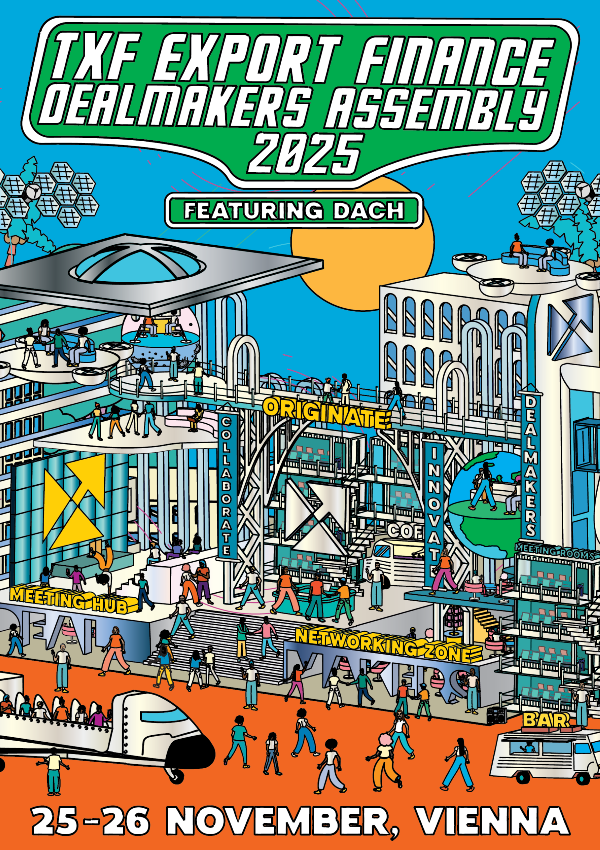Sharp rise in marine fuel will impact global trade
The global shipping industry is preparing for a sharp rise in the cost of marine fuel come 2020. Jonathan Bell explores the implications of this – for the crude oil sector, refiners and for global trade.

In 2020 the global shipping industry will be looking at more expensive marine fuel, following new regulations to limit emissions of a pollutant in high-sulphur grades of marine gasoil. The knock-on effect will see a large-scale move by many shippers to use low-sulphur products, thus pushing the price of the fuel product up, and in turn higher prices for crude. There will also be spin-offs in many other areas of trade and ship-related transport costs on the back of all this.
The market change will come as new rules are introduced for 2020 by the International Maritime Organisation (IMO). These rules targeting air pollution will cut the maximum amount of sulphur emissions that ships worldwide can burn to 0.5% of fuel content by 2020, from the current 3.5%.
Any vessels failing to comply will face fines, could find their insurance stops being valid and might be declared unseaworthy which would bar them from sailing.
The consensus is that with only 16 months to go the shipping industry simply isn’t prepared for the massive upheaval that will take place. There are also fears that there simply won’t be enough low-sulphur product to go around. Further, that come late 2019 there will be a lot of strange movements in terms of market pricing.
Will refiners be able to shift a gear to produce enough IMO-compliant fuels? Another concern is just how compliant will the shipping sector be, and how will the industry be able to identify the cheats?
As for the knock-on to crude oil prices, in a recent survey of analysts undertaken by Bloomberg to estimate the likely price effects of the regulatory change, the overall result found that crude oil prices were forecast to rise by $4 per barrel. Morgan Stanley has said that the IMO’s lower sulphur fuel regulations will see oil headed for $90 per barrel.
As I write this, on the crude oil front, Brent is trading at $78 per barrel and WTI at $70 per barrel. Analysts believe that ‘sweet’ (less sulphur) crude such as North Sea Brent will see a bigger price hike, compared to ‘sour’ (high sulphur) crudes from Mexico, Venezuela or Ecuador, for example.
Overall, there will be a knock-on effect for global trade. The cost of shipping – bulk carriers, tankers and containers will increase. That cost will ultimately be borne by the consumer, but in the first instance it is the shipping companies who will have to carry increased costs.
The changes will, in turn impact prices in the refined product market. Marine gasoil currently trades at a premium of about $250 a tonne to fuel oil. Forecasts are that this will climb to $380 per tonne by early 2020.
Thomson Reuters Research (TRR) estimates fuel accounts for about half a ship’s daily operating cost. Based on average fuel consumption of 20 to 80 tonnes a day (MT/day), a ship using cleaner fuel faces extra daily expenses of about $6,000 to $20,000.
Giving one example, TRR says, a VLCC (very large crude carrier) will pay 25% more for its fuel, or an extra $500,000 on top of a normal bill of $2 million, for a typical 25-day voyage from the Middle East to Japan.
In a report from consultants Wood Mackenzie in April this year, it noted that global shipping fuel costs are likely to rise by a quarter, or $24 billion, in 2020 when the new rules kick in. It said this was a “base case” figure, but that the increased costs could be up to $60 billion, depending on how many ships had so-called scrubber (see below) technology fitted.
Maersk, the world’s largest container shipping line, has said that adhering to stricter environmental standards could add at least $2 billion to its annual fuel bill from 2020. Maersk spent $3.37 billion on fuel last year. Maersk is committed to full compliance of the new regulations. The costs of compliance are considerable, and increases in prices could lead some shippers to cheat by using much cheaper non-compliant fuel.
In a paper published in September last year by Maersk entitled ‘Switch, scrub, or just cheat?’ it stated that: “Maersk and other shipping lines have voiced support for the rule since it was agreed back in 2008. There is just one major problem: No one knows how to enforce it yet.”
Simon Bergulf, regulatory affairs director at A.P. Moller – Maersk, stated: “For the rule to work and reduce sulphur emissions, everyone needs to abide by it and that means there needs to be a way of policing the emissions of all vessels on the open sea. And no one has that solution yet.”
Annette Stube, head of sustainability at A.P. Moller – Maersk, said: ““And since the rule will increase fuel costs significantly for companies like Maersk that comply, it wouldn’t be an exaggeration to say that the incentives to cheat will be big and the savings cheaters could reap would provide a considerable competitive advantage.”
The paper noted that according to the Organisation for Economic Cooperation and Development (OECD), the cleaner fuel will cost the container shipping industry an extra $5 billion – $30 billion, annually. This was actually a conservative estimate at the time to the realisation now of the potential costs given the increased cost of crude since last year – and particularly as even Maersk alone foresees increased fuel costs of $2 billion per year.
The industry is investing at looking at ways to counter any cheats – one idea being a tamper resistant black box mounted on ships to collect emission data. In that paper, Stube also said: “Shipping is the most efficient mode of transporting goods, but there is more for us to do. Our industry must continue to do its part and this rule has significant potential. With effective enforcement, it can be a positive development in the reduction of harmful sulphur particles by ensuring everyone is playing by the same rules.”
Some of the shipping industry already have scrubbers fitted to their vessels, which is one way of burning high-sulphur fuels while limiting emissions of the pollutant. However, there are approximately 90,000 vessels in the worlds commercial fleet and the majority do not have scrubbers installed.
Just how many can get scrubbers fitted in time for 2020 remains to be seen. Much of course will depend on the availability of access to finance, scrubber manufacturing capacity and dry-dock space. By all accounts there is only the capacity to fit between 300-500 vessels each year with scrubbers. Wood Mackenzie estimates just 2% of the global fleet will have scrubbers by 2020.
There is some evidence that more shipping lines will now install scrubber technology in some of their vessels. Two of the major producers of scrubbers, Wartsila and Alfa Laval, have reported increased orders of scrubbers in their financials. It is understood that fitting scrubber technology can cost between $1 million to $6 million per vessel. And of course, given the increase in the cost of fuel, over time this initial outlay could easily be recouped.
In one example, commodity trading and logistics company Trafigura has ordered scrubbers for its fleet of 32 ships.
Maersk has ruled out the option of installing scrubbers in its existing vessels, as well as the use of LNG as an alternative fuel, and is committed to using low-sulphur fuel. This view has been reinforced by Maersk CEO Soren Skou
As part of this strategy, Maersk recently announced the creation of a 0.5% fuel-supply facility in Rotterdam with storage company Vopak that will cater for around 20% of Maersk’s global demand. And Maersk is also looking into the potential of similar facilities in other strategic locations.
In another example, Royal Dutch Shell is considering expanding the capacity of one of its German refineries to make oil products that meet the upcoming cap on the sulphur content of fuels used in shipping. Shell is understood to be considering modernisation of the residue processing unit at Rheinland refinery and an enhancement of the desulphurisation plant there.
This presents another potential shift in the refining sector. It is estimated that the global refining industry needs to process an extra 2.5 million bpd of crude to make distillates for cleaner fuel. It is also estimated that 60% of Middle Eastern and European refineries are not prepared. Revamping existing refineries to produce cleaner fuels is a particularly expensive option though.
So, will the primary locations for refuelling ships change with vessels going to the new locations where lower sulphur fuels are available? China is one country with a surplus of cleaner marine fuel supply and is positioned to attract shipping. It is also understood that Spain’s Repsol, Finland’s Neste Oy, the UK’s BP, Turkey’s Tupras, India’s Reliance, Exxon Mobil, Marathon and the US independent Valero are among some of the best prepared refiners because they already produce cleaner fuel oil. The US refining system and the complex refinery units on the US Gulf coast are particularly well-placed to capture much of this business.
Exclusive TXF Essentials Subscriber content:
Southern Gas Corridor: The funding tap that keeps on giving
Despite Moody’s rating downgrade for the $41.5 billion Southern Gas Corridor in 2017 amid ongoing concerns over Azerbaijan’s creditworthiness and politics, the scheme has attracted an unprecedented amount of tightly priced debt from DFIs and multilaterals, with commercial lenders and ECAs now flocking into the final funding mix.
Shop talk: Peru’s PPP promise
Peru’s investment grade rating and favourable legal framework for foreign investment has helped build its investment promotion agency ProInversion's $11 billion PPP pipeline. TXF spoke with Cesar Martín Penaranda, the agency's director of investor relations, to find out how many of these projects will reach financial close, and whether there's reality behind the rhetoric.
Shop talk: From tech evolution to economic prosperity
Ahead of TXF New York 2018, Patricia Gomes, managing director and head of global trade and receivables finance for North America at HSBC, spoke with TXF about how a changed trade scene, and the influence of technology, is quickening the pace of trade finance.
LNG-to-power: Turning up Bangladesh’s power supply
Bangladesh’s DFI-backed LNG-to-power project financings are the government's answer to depleting domestic gas reserves and fast-growing power needs. But, the integrated nature of these complex projects and increasingly long tenors backing them means pure commercial bankability is still some way off.
DFI-ECA cooperation: The key to bridging Africa’s infra gap
ECAs and DFIs are showing an increased risk appetite for African exposures, especially on large-scale project financings. However, these policy-driven financial institutions need to collaborate rather than compete on such deals in order to help plug Africa’s $93 billion infrastructure funding gap.
ECA Data: Fonzi’s facts and figures:
TXF Data's top lending opportunities, latest Category A projects under consideration by ECAs, and provisional CIRR trends are here for this week.
Plus, to top things off… the news you thought you had but you don’t
El Al Israel Airlines signs tightly priced UKEF-backed loan
El Al Israel Airlines signed a $124 million UKEF-backed facility on 8 August to finance the procurement of a Rolls Royce-powered Boeing…
Reliance Power nears close on $750m LNG-to-power project deal
Reliance Power is expected to reach financial close on a $750 million loan over the coming months to finance its $1 billion integrated 750MW LNG…
NKNK closes Hermes-backed facility for petchem plant
Russian petrochemical company, PJSC Nizhnekamskneftekhim (NKNK), closed a €807 million ($945 million) Euler Hermes-backed loan on 9 August to…
Sinosteel sounds out banks for $203m Malawi hydropower project
China’s Sinosteel Equipment and Engineering Corporation, a subsidiary of Sinosteel Group, is sounding out banks for a $162 million loan to finance…
DTEK Renewables closes Hermes-backed wind farm
DTEK Renewables closed a €90 million ($105 million) Euler Hermes-backed loan on 24 August to finance the first stage of the 100MW…
Advanced Power seals $1.3bn gas plant financing
On 23 August Advanced Power achieved financial close on a $1.3 billion deal to finance the construction of a 1.18GW natural gas power…
Daystar Power signs $500m DEG-backed loan
Renewable energy solution provider Daystar Power has signed a $500 million DEG-backed loan to finance the roll-out of…





